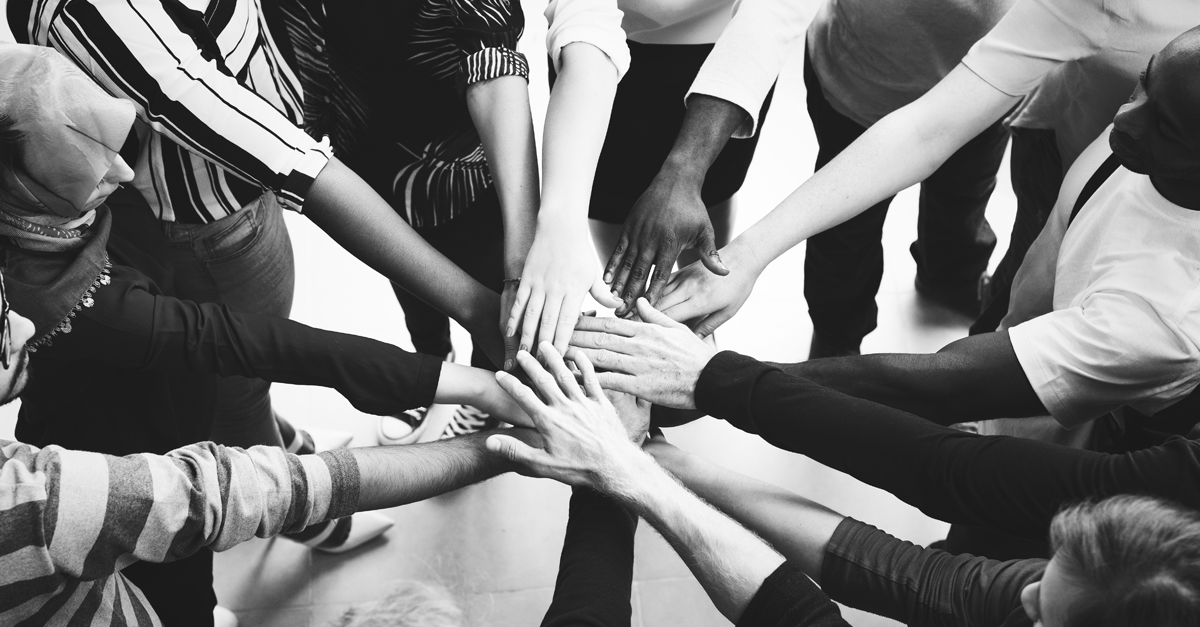Inclusion and diversity have been two hot topics for most companies, especially within the last few years. Efforts to improve inclusion, diversity, equity, and access are important and go a long way to foster a positive, diverse work environment. For these efforts to succeed, they must be set up properly. Let’s discuss why inclusion and diversity initiatives often fail without equity and access, before we outline a potential solution for improvement: an I.D.E.A. plan.
What is an I.D.E.A. Plan?
An I.D.E.A. Plan is a plan that reflects an organization’s commitment to attract, retain, accommodate, and involve a range of diverse people who are valued, accepted, and comfortable at the international, national, regional, or local level. The plan outlines actionable, attainable steps to making positive change.

An Example of a Diversity and Inclusion Initiative Without a Focus on Equity and Access
Imagine a new theatre is coming to town. The owners are positioning the theatre as “inclusive for all” to the diverse city council. Based on this promised inclusiveness, the city council approves the building. This approval does not require oversight for the ‘inclusive for all’ messaging, but it does require the building reflect the ‘new normal’ of COVID-19.
To match the ‘inclusive for all’ promise, the theatre advertises affordable ticket prices ranging from five to fifteen dollars. In response to COVID-19, it also advertises virtual reality experiences, high-quality food, socially distanced and safe setup, and virtual meet-and-greets with actors. Finally, the theatre promises that after every movie experience, you get to provide feedback to the owners to make improvements.
This new theatre’s overall goal is to make it affordable for all and inclusive of everyone in the community it is located. However, during the design and construction of the theatre, this goal is not adhered to. This new theatre is in a city that is 48% minority and women-owned businesses, yet none of those businesses were utilized for this new attraction in their city. Instead, construction and design focus on reducing the spread of COVID-19. The owner decides affordability is enough to be “inclusive for all.”
The theatre is constructed and opens to the public. You arrive with your family. You and your wife are there along with your grandpa, who is eighty-seven and uses a wheelchair, your seven-year-old child, who has a nut allergy, and your seven-month-old. You are excited to come to a theatre that is inclusive to all.
You arrive to find all the seating is located on various levels throughout the building with no ground seating. There are no elevators. How will Grandpa get to his seat? The entrée options are limited, prepacked, and cooked in peanut oil. The snack options are a variety of pre-packaged nuts. While these options are safe for the new normal, your seven-year-old can’t enjoy them. All available bathrooms are located on the lower level for consistent cleaning and sanitizing, but your seats are on the fourth level. You know your seven-month-old will need a diaper change before the movie ends, requiring you to go up and down four flights of stairs. Your inquiry about the virtual meet and greet reveals there is an extra cost of one hundred dollars per person, which is not affordable for your family. This ‘inclusive for all’ theatre fails to be inclusive.
Why This Effort at Inclusivity Failed
This is what many diversity and inclusion programs across various organizations resemble. They have good intentions in being diverse and inclusive but lack a focus on equity and access. Programs that promote inclusion usually start by kicking off a diversity program and hiring someone to lead their organizational efforts. In many instances, sufficient staffing, financial resources, and the authority to make small organizational changes are not allocated to the new “Diversity” position. This hampers the program’s ability to make effective, progressive changes. In the above example, the owner focused on being inclusive through affordable ticket prices and Covid-19 safety. While everyone could afford to get through the door to a safe environment, the experience was neither equitable nor accessible for all. Despite good intentions, the overall initiative failed.
Hiring Practices Can Also be Missed Opportunities
Organizations often hire women and/or ethnic minorities for their organizations, but not in leadership, executive boards, or positions that provide access to the decision-makers. Organizations promote inclusion and fairness, but often when a woman and/or ethnic minority is hired, there is rarely any ascension from their incoming position. While this may be a challenge for flat organizations, efforts to provide visibility, opportunities for innovation, and access to the decision-makers can mitigate the lack of opportunity for ascension.
These are the most common reasons why so many diversity and inclusion programs struggle to make a change. The focus has been heavily placed on diversity and inclusion but not equity and access.
How can a company be different? What is our big I.D.E.A?
Our company, like others, is reshaping how we focus on diversity, inclusion, equity, and access. Creating a feasible plan requires collaboration across all levels of an organization and the expertise of industry experts outside the organization. This allows each plan to reflect what an individual company needs. Below is an example of an Inclusion, Diversity, Equity, and Access (I.D.E.A.) Plan.
Inclusion
We will implement Skills Based Inclusive Leadership Training, recognizing that a once a year check-in for our DEI (Diversity, Equity, and Inclusion) goals is not going work for cultural or organizational change.
We will move from a compliance-based approach to a relationship-driven approach.
We will cultivate relationships for our diverse talent the same way we cultivate our relationships for business.
We will integrate inclusive leadership skills into our core management competencies for all managers.
We will implement specific training such as inclusive hiring, debiasing feedback, and evaluations, and working with various generations across the organization, not just within our Human Resources Department.
We will develop a baseline inclusionary plan for the organization but will tailor additions to those plans for our various market footprints.
We will clarify what we mean by “inclusion” or “belonging” and develop strategies with that focus.
Diversity
We will cast our net far, wide, and beyond our market footprints to recruit and hire diverse talent.
We will not only engage ourselves in our diverse community but engage in diverse networks and institutions.
We will connect and recruit diverse talent from our HBCU’s and MSI’s across the nation and seek that diverse senior professional who may want to move from Chicago to North Carolina just because of the weather.
We will create sophisticated DEI Committees and Employee Resource Groups. These teams will be tailored to the vision of our company.
We will seek alliances with DEI professionals and organizations to aid in our journey towards a true representation of our communities.
Equity
We will look at our current policies and procedures while asking ourselves, “is this policy equitable for women and minorities”?
We will re-emphasize our cross-utilization program to provide opportunities and access for everyone’s voice to be heard and career development to be obtained.
We will evaluate ourselves and make sure that when we poll employees, we include women and all ethnic backgrounds that are a part of our organization, not just those in leadership.
We will look at our employee discounts and perks programs and evaluate them.
We will act with these questions in mind: Are we a representation of our communities? Are we an economic driver to the minority and women-owned businesses around us?
Access
We will go out of our way to provide access to all. An example of this is a call before 8 am or after 6 pm to ensure everyone has access to conversations with leadership.
We will make sure we poll diverse individuals within the organization to garner feedback from our employees.
Leadership will keep an open mind in the possibility that we may have to go to the employee to have access to us to voice recommendations or concerns.
The organization will constantly approach everyone internally and externally as someone that is valued.
Conclusion
A company may strive to resemble the diverse communities and clients they serve, but simply bringing in diverse people isn’t enough. As teams create plans to improve diversity and inclusion at their company, it is imperative to remember that equity and access are just as important. Without all four parts of the I.D.E.A, diversity and inclusion efforts stop at getting people through the door.
